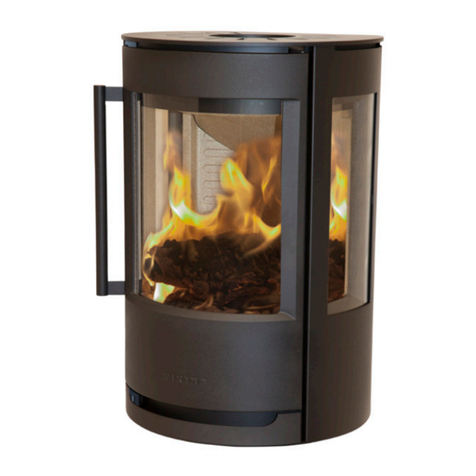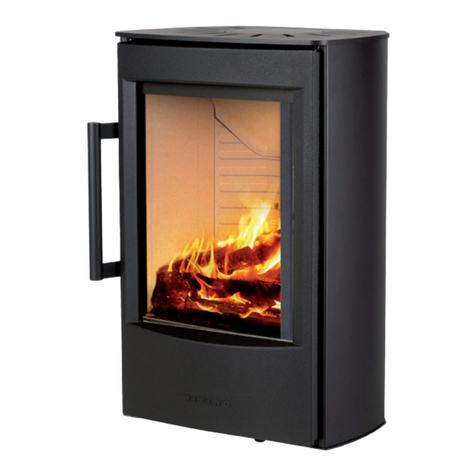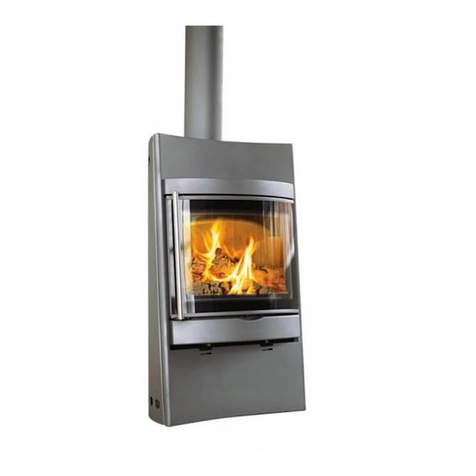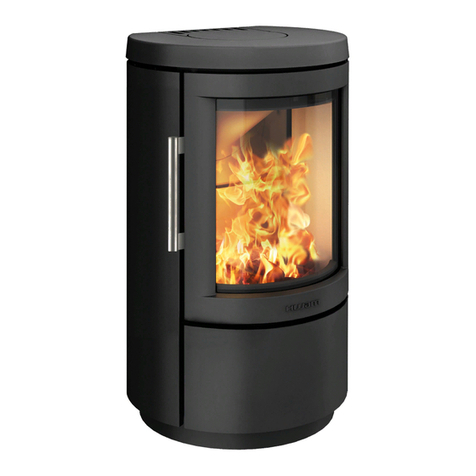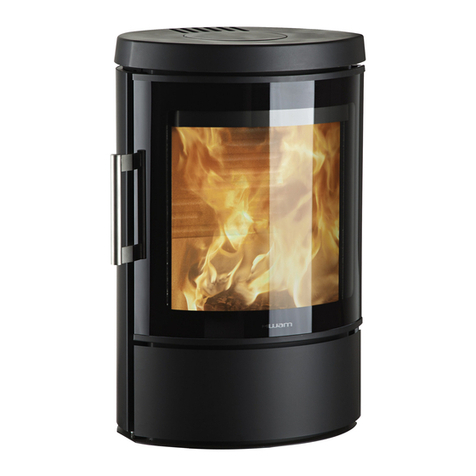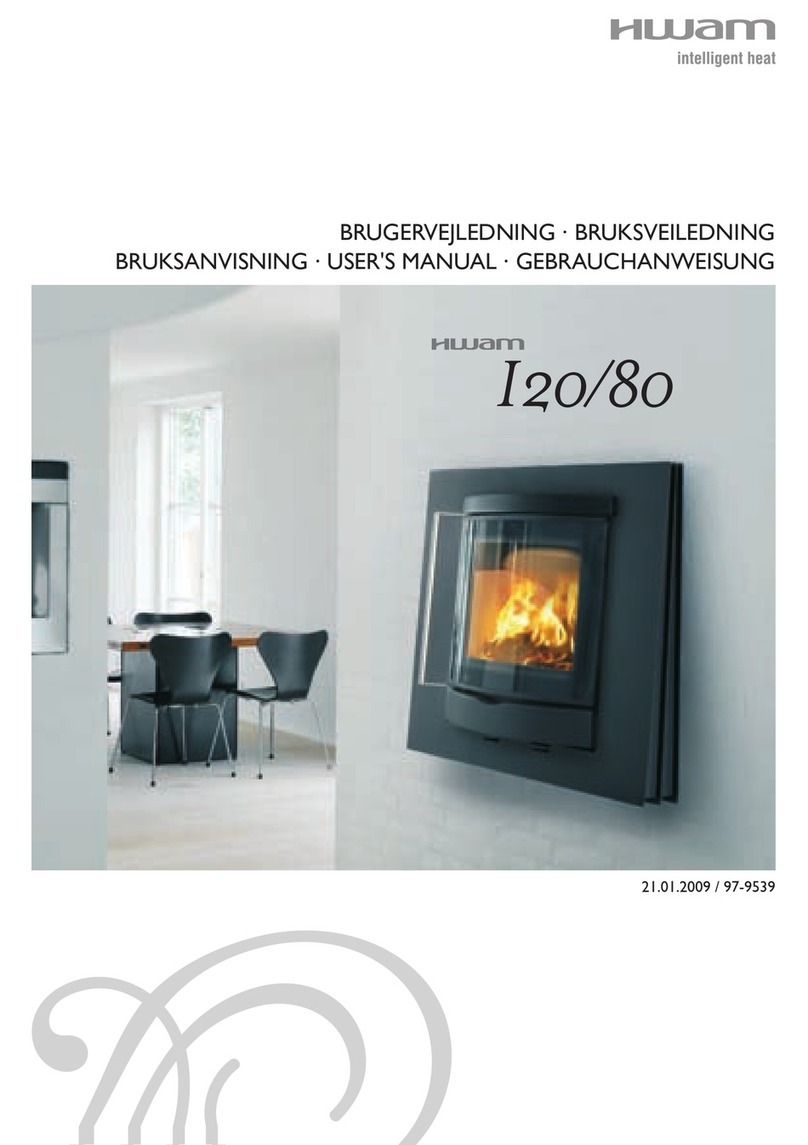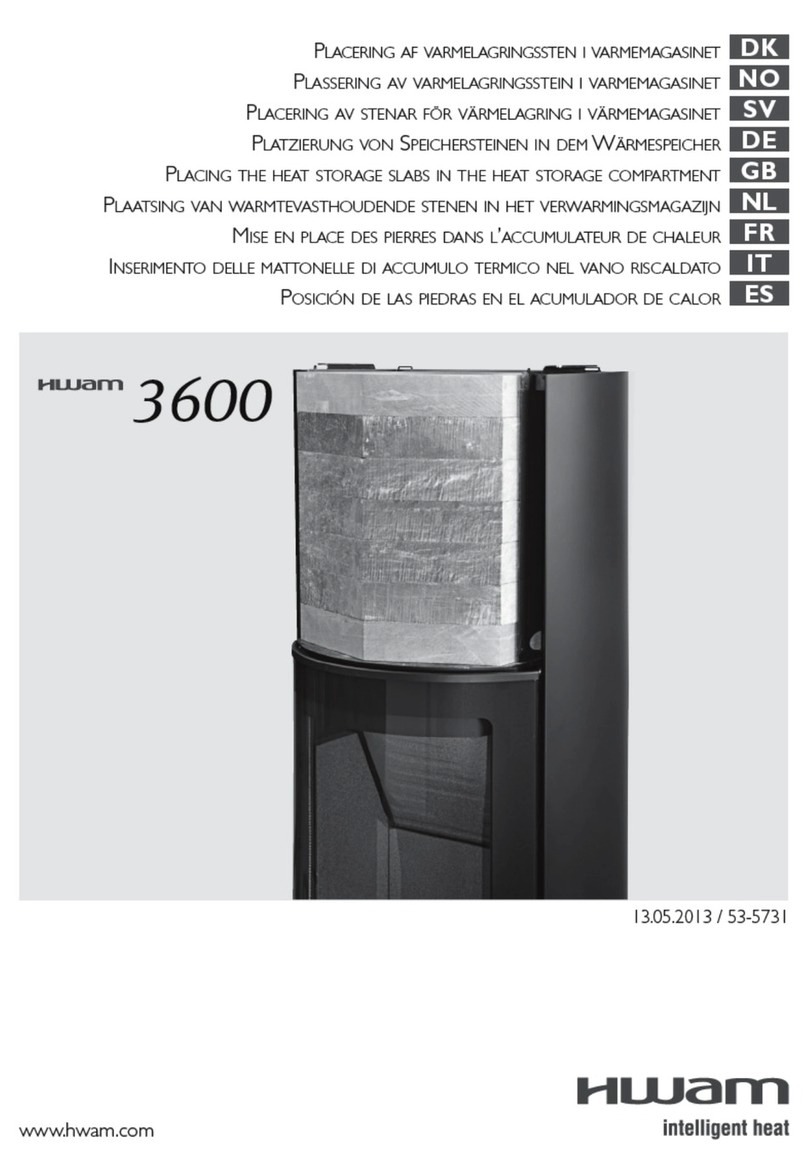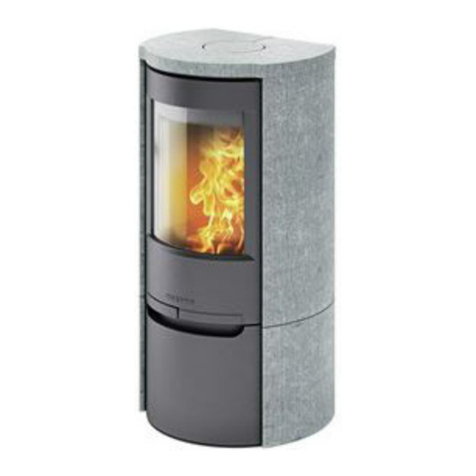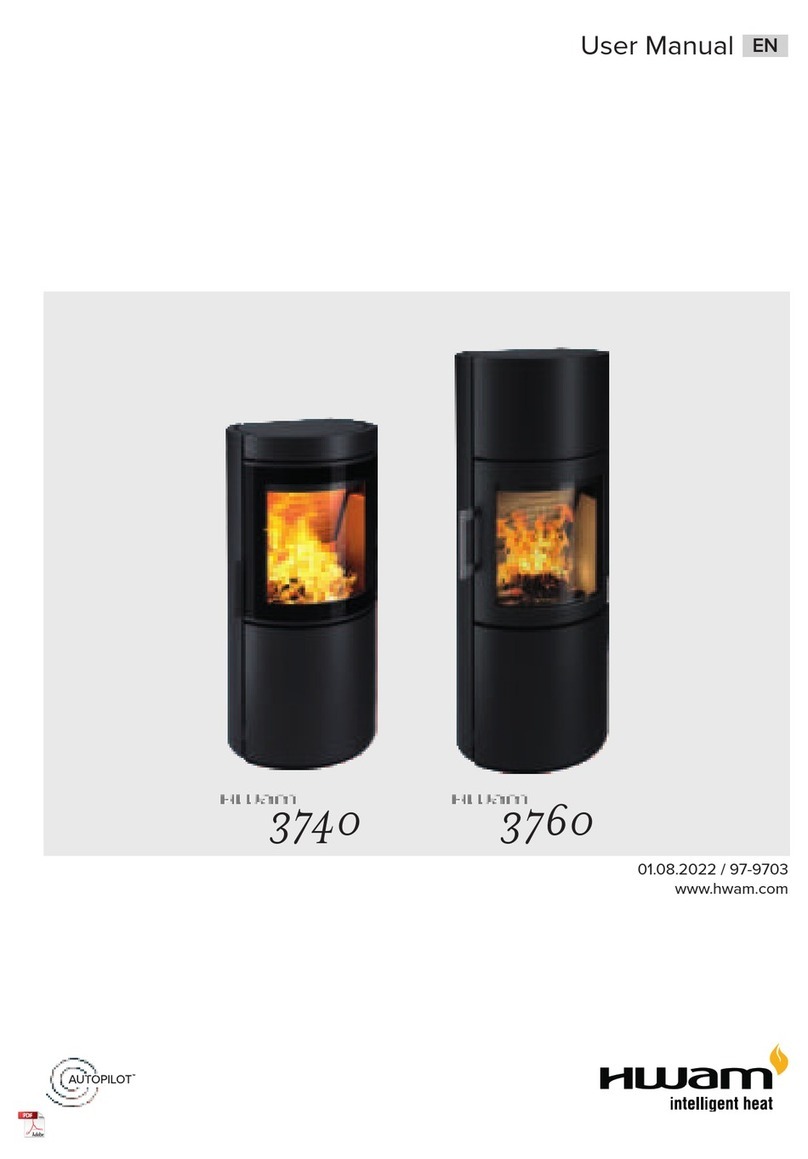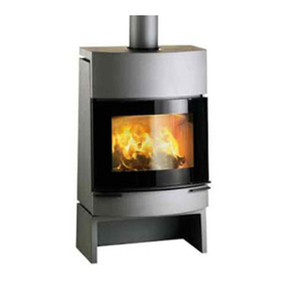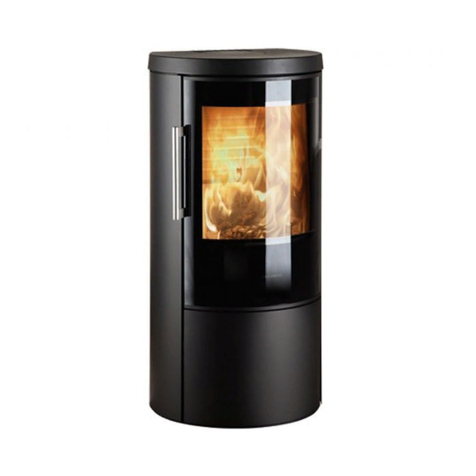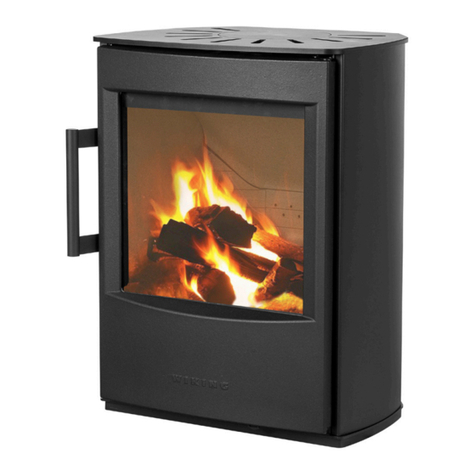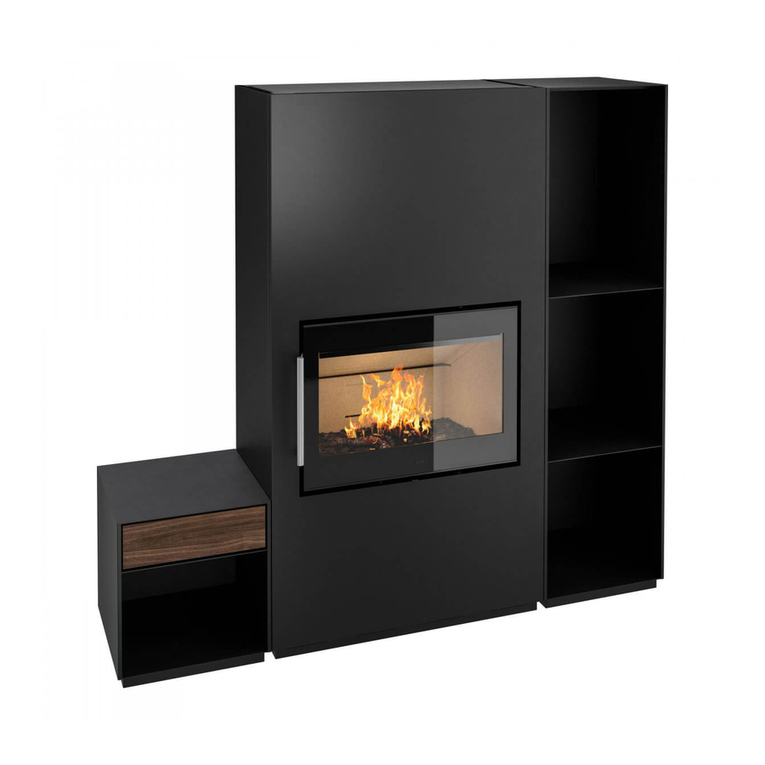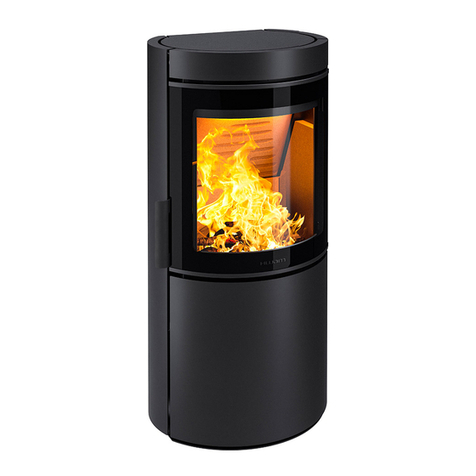E & OE Instructions Part number IN1140 Ed A
3
©EUROHEAT DISTRIBUTORS (H.B.S) LTD. Nov 2006
IMPORTANT
.
The installation of this appliance must comply with all local regulations, including those referring to
national and European Standards before it can be operated. The stove is not suitable for a shared flue.
However, for England and Wales, only, the coming into force on 1st April 2002 of SI 2002 No 440 exempts
the householder from this legal requirement for the installation of solid fuel fired appliance whose rated heat
output is 50kW or less in a building having no more than 3 storeys (excluding any basement) if a Competent
Engineer is employed who is registered under the Registration Scheme for Companies and Engineers involved
in the Installation and Maintenance of Domestic Solid Fuel Fired Equipment operated by HETAS Ltd. These
registered Competent Engineers may also carry out associated building work necessary to ensure that the
installed appliance complies with Building Regulations without involving the Local Authority Building Control
Department.
Improper adjustment, alteration, maintenance or the fitting of replacement parts not recommended by the
manufacturer can cause injury or property damage. Do not operate the stove with faulty seals or damaged
glass.
Due to the high operating temperatures of this appliance it should be located away from pedestrian traffic
and away from furniture and draperies. Do not store paper or wood near the appliance. Any mats and rugs put
in front of the stove should be fire proof and secured to prevent the possibility of tripping.
Advise all persons as to the stove’s high surface temperatures. If it is possible for children or infirm adults to
come into contact with the stove, fit a suitable fire guard.
It is imperative that all air passageways into, out of, and within the appliance are kept clean. All permanent
ventilation into the room provided for the stove must remain clear and unobstructed at all times. Consideration
must be given to the need for extra ventilation if another heating source needing air is to be operated
simultaneously. If an extraction fan is proposed to be fitted to a connecting area of the house, after the stove
has been installed, professional advice should be sought from a qualified engineer.
The user should be advised that the appliance should be inspected regularly and the chimney cleaned at
least annually.
More frequent cleaning may be required and the advice of a qualified chimney sweep should be sought.
Our range of stoves is capable of operating with outstanding efficiency if the flue system is correct. Because
so little heat is wasted to the flue it is possible that moisture within the products of combustion will condense
if the heat losses within the flue way are too great and allow the flue gases to cool. For this reason we
recommend that the stove is fitted with a suitable flue liner, the same diameter as the flue spigot, to prevent
the possibility of acidic damage to the fabric of the chimney and damage to the stove which will reduce the
longevity of the stove.
When correctly installed, the stove is designed to produce heat, safely. It cannot do so if the installation is
less than absolutely stable, constructed of materials suitable for such an installation and consideration has not
been given to the possibility of people with less than ideal common sense operating it.
Have the existing chimney swept by a chimney sweep. Although you will be lining the chimney, any deposits
left in the chimney will cause problems and may become a fire hazard.
Your attention is drawn to the precautions and responsibilities under the Health and Safety at Work Acts,
and whatever new legislation being introduced during the life of this document.


















